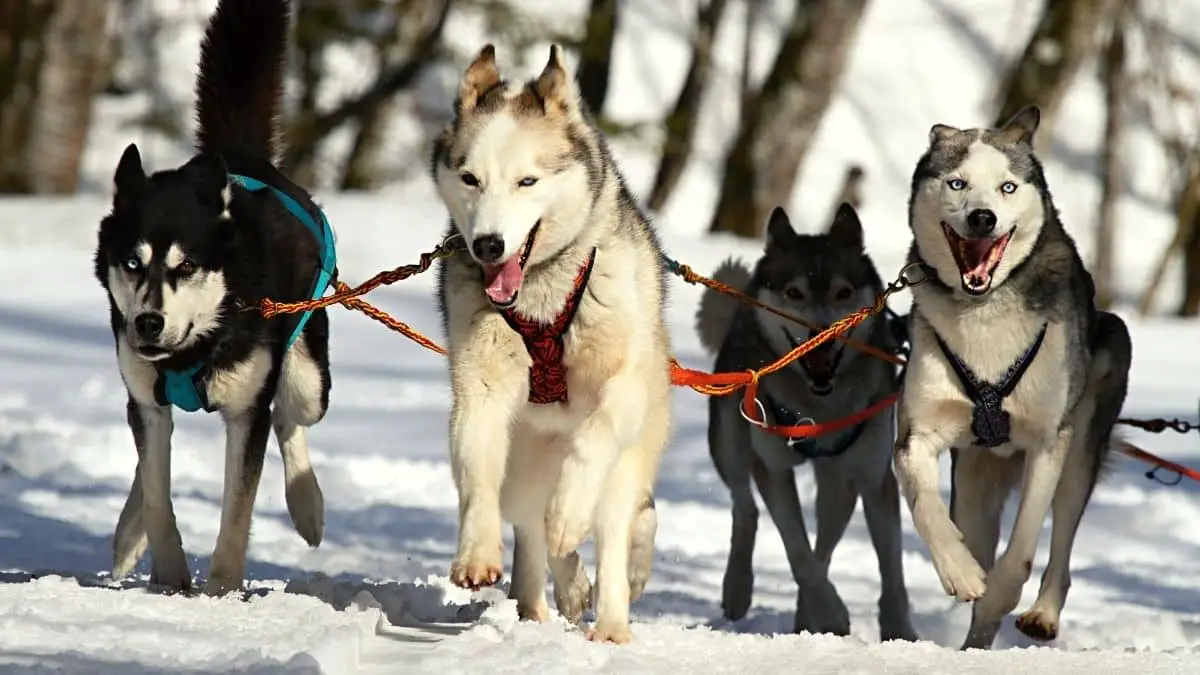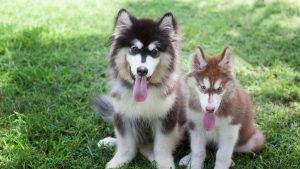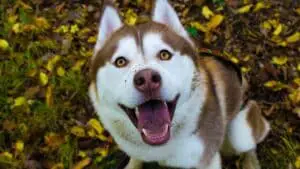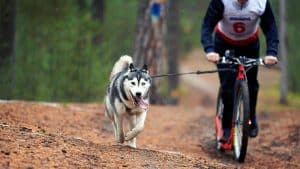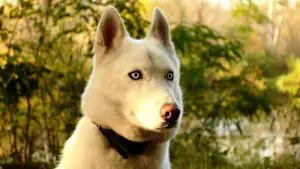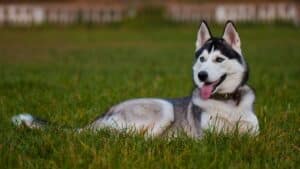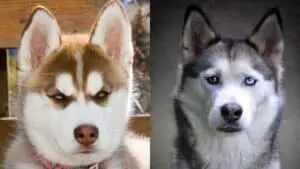Do Siberian Huskies Change Colors? 7 Things You Need To Know
Siberian Huskies are one of the most active, goofy, and magnificent-looking canines. Many doggo-lovers adore the rich coats and intriguing eye colors of the Huskies. One question that pet parents generally wonder about is, “do Siberian Huskies change colors?”
Yes, your Siberian Husky can change its coat color as it ages, and it also depends on the season. The Sib puppies tend to have more dark-toned fur that generally lightens as they reach adulthood. Moreover, these beauties also change colors during cold temperatures. You might notice some color change when the shedding months for the Husky approach.
Many pet parents tend to worry at the sight of coat color changing, but it is quite natural! We’ve rounded up some vital information about husky changing colors so that you are also geared up when it happens. Let’s get started!
Table of Contents
Coat Colors of a Husky
Siberian Huskies can have a variety of fur colors. Remember, the color shades and the marking might change with time, but the entire color remains the same throughout. Here are some typical Siberian Husky colors:
- Solid White
- Dark wine/red
- Grey
- Agouti
- Black and White
One color-related fact you should know that only solid white Husky Sibe has a single coat color. All the other fur colors either have a touch of white or light silverfish undercoats. This silver undercoat is so light that it’s difficult to spot it under a white undercoat.
Do the Husky Markings Change With Time?
We can’t agree more that a husky pup’s markings make it look more charming and adorable. However, these markings are all set to change as the puppy marches towards adulthood. You cannot predict the exact change pattern as this differs from canine to canine.
Generally, the little beasts have a darker marking, which becomes lighter as they change their fur color. Huskies also have genetic gray colors. The grey color is more prominent on the dark-toned Sibs.
Some Siberian Husky pups may not have grey markings at all. However, as your Husky gets to middle age, the grey markings will become more apparent. You’ll notice that these grey markings appear around the muzzle and the extraordinary eyes of the Sib.
So, if you think those adorable markings will remain unchanged as your lad grows up, you’re mistaken!
Do Solid Color Coats Change Color?
Although it is a rarity, you can spot a few solid white-colored Huskies. Generally, the markings of the Siberian Husky changes when they transition from puppyhood to adulthood. However, this might not be the same with solid-colored Sibs.
Pure white Siberian Huskies might not develop any face markings at all. However, with these pure-white babies, you might notice some change in color tones. During the chilled winter months, the Husky’s coat may turn into a light shade of golden or yellowish.
Many people believe that pure-white Siberian Huskies are albinos, due to which they do not change color. However, this is a misconception, and the solid white color is pretty natural.
Moreover, as the Husky enters middle to old-age, you may notice gray hairs appearing around the muzzle, temple, and eyes. A solid elderly Husky might seems like it develops a mask. In reality, that grey hair is just the canine aging and graying out.
The Difference in Body Fur and Mask Color
Huskies can have a variety of facial markings, which are also known as masks. The color of these masks might vary from the actual color of the coat. If you have a husky as your pet, you might notice a color variance of his body versus the mask. This color variation is a genetic trait.
The canine’s mask color will typically be lighter than the rest of the coat. Your Siberian Husky doesn’t need to develop dark-colored fur. Especially if you own a solid-colored husky, dark markings will be a rare sight.
Even if your Husky has a dark-shaded mask, it should be lighter than the rest of the body. For example, if your young Sib has distinctive light eyebrows, they might fade away as the lad grows up. However, don’t worry, as your Siberian Husky will look handsome as ever!
How Often Do the Huskies Change Color?
When you think of “Do Siberian Huskies change colors?” you might also wonder how often it does happen. The mature Siberian Huskies show color changes once or twice around the year. The shedding habits of the Siberian Husky tend to affect their coat color.
Typically, the shedding takes place for Siberian Huskies twice a year when the weather changes. Some of the canines shed only once a year. In the winter, your Husky may develop a thicker and darker coat.
On the flip side, during the shedding season in summer, your husky may develop a much lighter coat. Because of this reason, you can consider this coat color change to be a natural process.
Do Husky Pups Change Color Too?
When the husky pups are born, they will typically have a soft and fuzzy coat. For some reason, the Sib pups are born with darker-toned fur. As these puppies reach adulthood, they shed their fuzz and develop a coarse, thick coat.
This new thick coat may be much lighter than the puppyhood coat color. In some cases, Siberian Husky puppies can also have black markings. These black markings might eventually turn into light grey after their first shedding season.
If your husky babe has dark patches around the eyes, they might fade out completely. While, in some situations, these dark markings will turn into a lighter shade. These changes will only take place during the shift in seasons and during the shedding.
There are even cases where the mask color doesn’t always develop a lighter shade. Many a time, the lighter markings disappear only to come back with a dark solid color. Generally, it is the eyebrow markings that will most certainly fade.
Reasons for Husky Changing Color
Other than shedding and season, there can be various other factors contributing to color change. Most of the dark-colored Sibs may alter coat colors if they are spending too much time outdoors. The harsh sun can cause the pups to change their coat colors.
If you own a black and white-toned husky, you can witness a slightly golden and brownish tint. However, this type of color change has nothing to do with normal shedding.
These color changes occur because of prolonged exposure to sunlight. For some Husky canines, the color might revert to dark once you limit sun exposure. But, in many cases, this sun-cause color change can be permanent.
Some pet parents claim that their jet-black huskies develop a red tint after a long day at the park. So, if this color change takes place, make sure to keep the puppy indulged in indoor activites for a while. It sounds like Huskies are prone to some reverse tanning!
Do Husky Eye Color Changes?
No pet parents want their Huskies to change their intimidating yet intoxicating bright blue eyes. However, there might be a possibility that your Husky doesn’t start with their trademark icy blue eyes.
Does this mean that your new Sib is going to transition into adulthood without that fierce and gorgeous eye color?
Besides, it is possible that the pups might not have the same blue eyes in adulthood. In some cases, the eyes of the Husky puppies might turn darker. If your puppy has a different eye color than that fierce blue, you’ll notice in around 5 to 8 weeks of age.
During 5 to 8 weeks of age, you’ll notice that Husky’s eyes are changing from bright blue to a much darker hue. It can turn into a grey or a murky shade. Thankfully, if your Huskies eyes are getting darker, it is a good indication.
The Husky will land on its final eye color between 12 to 16 weeks of age. However, some Siberian Husky pups can take longer than that to achieve their final eye color. Some pet parents claim that their Sib pup changed eye color as early as six months of age.
Once the pups reach adulthood, their eye color will most likely not change. The typical eye colors of the Siberian Husky is as follows:
- Blue
- Brown
- Bi-eyed
- Split or Parti Eyed
- Green
Final Words
So, now that you are accustomed to the color-changing habits of the beautiful husky, you’ve got nothing to worry about. It would help if you looked forward to this mask and coat color change as the puppy attains adulthood.
Though the color-changing process is natural, make sure you don’t leave the canine outdoors for too long. Whichever color the Siberian Husky takes up, it can’t change the fact that they are the lot’s cutest!
Make sure to take lots of images of Husky as it grows. In this way, you’ll be able to understand how much color change has your little lad undergone! We hope that this article solved all your queries about “do Siberian Huskies Change Colors?”.

